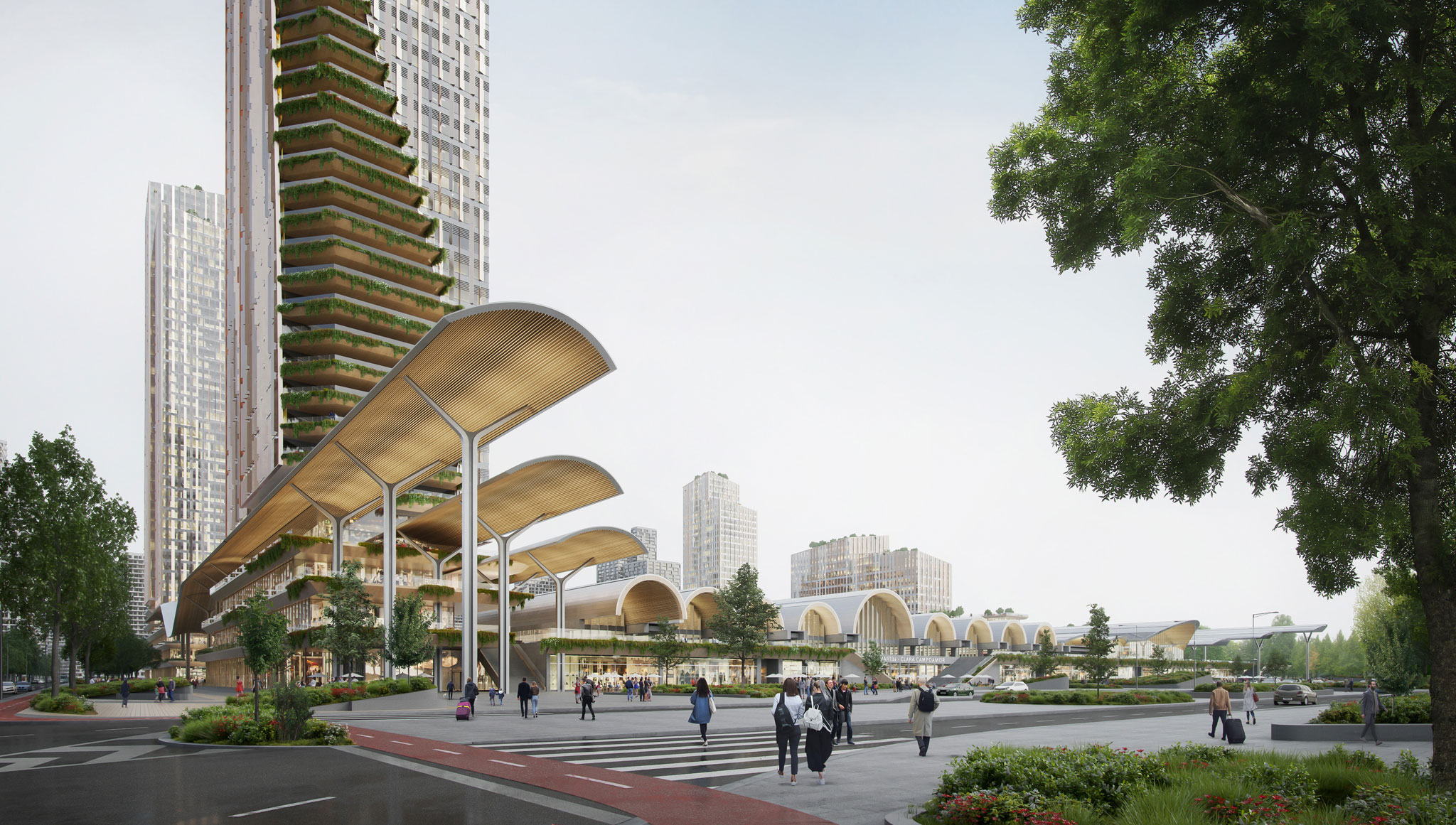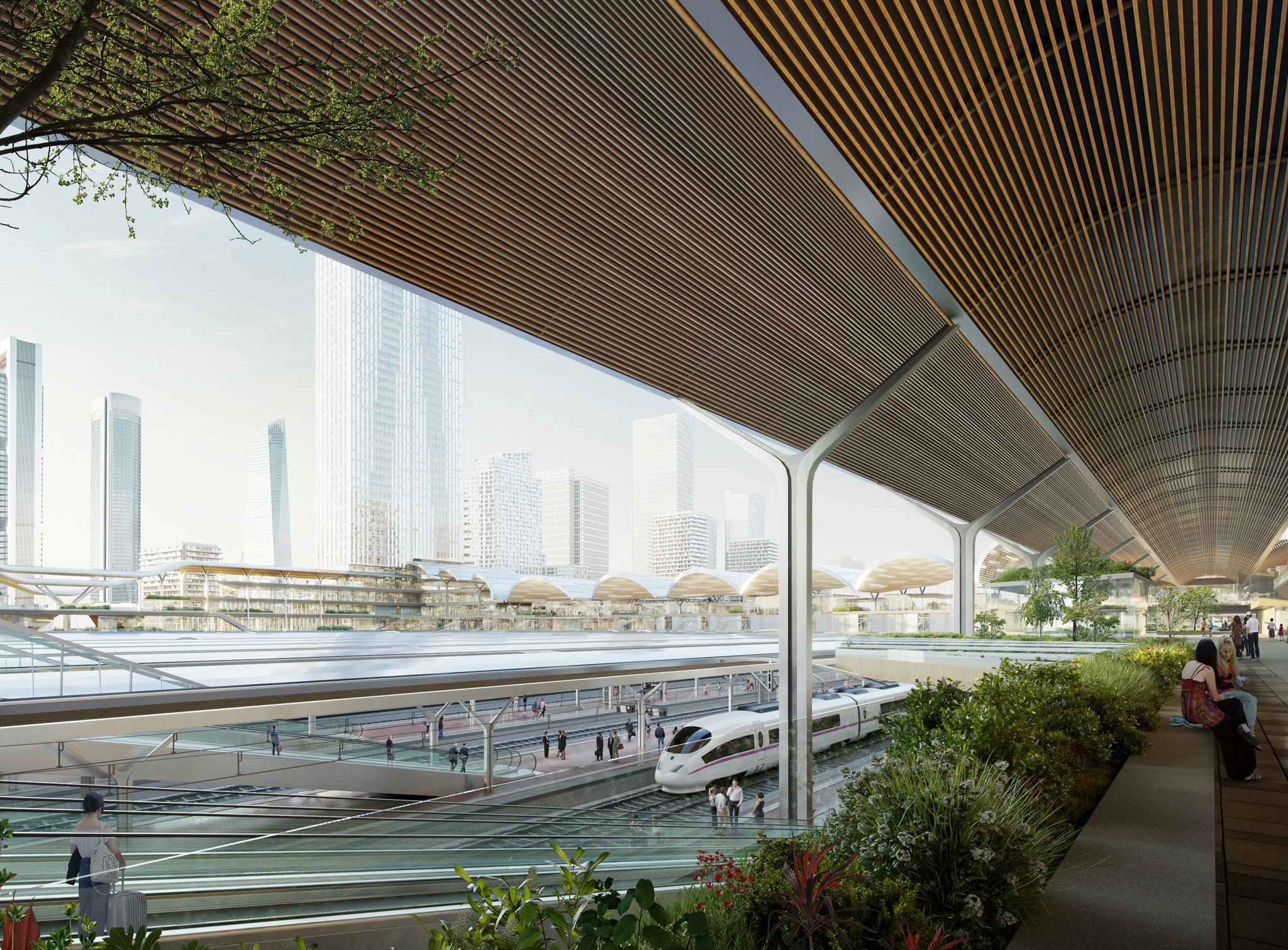The specifications demanded the integration of the train and the city in a proposal that is an example of architectural quality. Likewise, it established the independence of execution, financing and operation of the station to make its development and management viable.
The jury has highlighted the extraordinary level of the proposals presented, their quality in all the areas required in the international competition and the opportunity that each of them represents to face the railway, urban and architectural transformation that the new Madrid-Chamartín represents Clara Campoamor .
After the opening of the tenders, the award of the service contract for the transformation and urban integration of the railway transport node, as well as the drafting of preliminary projects, basic and construction projects -valued at 29 million euros-, will be completed once validated the documentation of the preselected group and the approval by the Board of Directors of Adif AV, in the coming weeks.

Visualization of the future Chamartín station and its surroundings by UNStudio, b720 Arquitectura and Esteyco. Image courtesy of ADIF (ADIF).
Vaults, terraces and towers
Chamartín open ecosystem is a project defined by three elements: the vaults, the terraces and the towers. With his choice, he is committed to an open station that promotes dialogue between the city and the railway.
The proposal respects the historical memory of Chamartín and the investments that Adif AV undertakes in the station, recovering the vaults as a singular element and identifier of the station. The urban balconies (stepped terraces), for their part, generate permeability with the city, open windows to the citizen over the station and integrate into the environment, as an extension of the parks located on both sides of the complex.
The architectural solution maintains the typology of individual canopies on the platforms and gives priority to the direct vision between the platforms and the city. In this way, in part, the representativeness of the station is transferred to the non-railway buildings, the towers, which will be perceived by the traveller as the first or last image of Madrid on their trip. From the buildings -like railway watchtowers- it will be possible to enjoy the train, while travellers will feel that they have arrived at the heart of a prosperous, modern and welcoming city.
The proposal responds to the railway functionality, through two multipurpose terminals, which can be used flexibly: for passenger departures or arrivals, the use of different railway operators and destinations and the future evolution of the railway complex. The north terminal includes a truncation that will expedite direct access to the Cercanías platforms and to the routes of travellers who depart or arrive on long-distance trains, coming from or going to Cercanías.

Visualization of the future Chamartín station and its surroundings by UNStudio, b720 Arquitectura and Esteyco. Image courtesy of ADIF (ADIF).
The jury valued the deep knowledge of flow dynamics. The complex is transformed into a large block courtyard, which generates interior routes around the tracks and platforms, guaranteeing connectivity and promoting pedestrian flow between the accesses from the four facades. To facilitate accessibility and mobility, two secondary lobbies are included, on the east and west.
The project also makes an outstanding intermodal connection with the interchange, with access through Agustín de Foxá, with easy integration with other modes of transport: taxi, metro and active mobility (pedestrians, bicycles, scooters). Likewise, it is aligned with the modernization plans that Adif develops in its stations, such as the Digital Transformation Plan and the e-futura Plan.
The commercial solution is based on an All in Hall model, appropriate for a high-volume station, with the coexistence of suburban and long-distance services. The configuration of the commercial blocks of the north terminal, as a public square, is reinforced with a corridor and elements of connection with the park and the city, intensifying the railway functionality of the south terminal.
The distribution of the tertiary in three towers allows patrimonial management independent from the rest of the complex. The offices are conceived as flexible spaces and have optimal natural lighting.
The independence of the pieces allows a phased and executable work plan in a flexible way, accompanying the railway needs.
The sustainability strategy responds to the criteria of an adaptable and inclusive infrastructure: accessible, digitized, last-mile logistics and urban design, designed for pedestrians and local mobility.

Visualization of the future Chamartín station and its surroundings by UNStudio, b720 Arquitectura and Esteyco. Image courtesy of ADIF (ADIF).
Double capacity, order flows and connect with more transports
The project will succeed in the actions that Adif AV currently undertakes at the station, to double the capacity of high speed and the passenger hall, organize flows, facilitate the connection with other urban transport - through the recovery of a Central lobby- and maximize routes and platforms for Cercanías and the medium and long-distance network.
Likewise, it will undertake the connection with the Madrid Bajaras airport, under tender, and the incorporation of spaces for new modes of clean transport. At this time, progress is also being made in the coverage of its 200,000 m² track bundle, which will support the large park of the Crea Madrid Nuevo Norte operation.
The actions carried out by Adif AV, which will consolidate Madrid-Chamartín Clara Campoamor as a benchmark for the transport of the future, represent an investment of more than 1,000 million and respond to the challenges of the liberalization of passenger rail transport and a more sustainable mobility model, intelligent and integrated, around the railway and with a focus on the traveller and the citizen.

Visualization of the future Chamartín station and its surroundings by UNStudio, b720 Arquitectura and Esteyco. Image courtesy of ADIF (ADIF).
International competition with multidisciplinary jury
The international competition for the transformation of Chamartín started in February 2020 and attracted the interest of 18 architecture and engineering teams. Of these, ten were selected based on economic, technical and professional solvency criteria and invited to participate a year later in the second phase, in which they presented their design proposals.
On July 13, nine were proposals received which, since then, have been evaluated by a multidisciplinary jury, made up of representatives of the Ministry of Transport, Mobility and Urban Agenda (Mitma), Adif and Adif AV, Crea Madrid Nuevo Norte (CMNN), local and regional administrations, the Transport Consortium and professional associations.





























